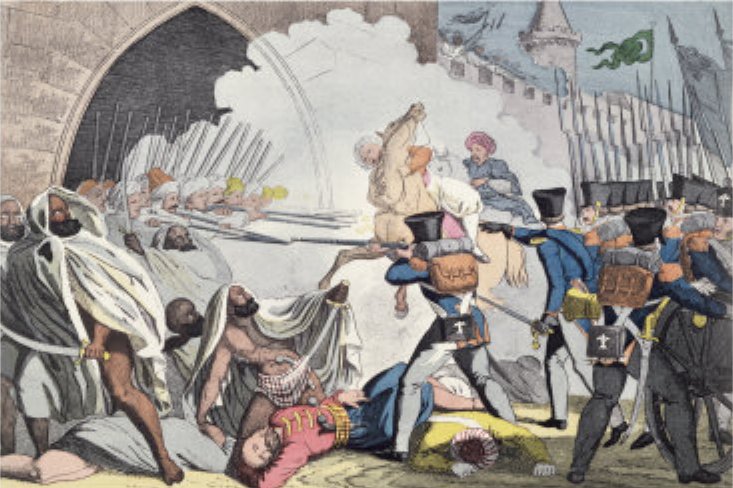The Incident of the Flyswatter
Yesterday I received an e-mail from a friend and regular reader of History in the Margins suggesting I write a post about the long, complex, and often difficult relationship between France and its Muslim citizens, hoping it would give her/you a context for the Charlie Hebdo killings and their aftermath. I will admit that I hesitated. I’m a historian, not a political commentator.
But in fact, I feel strongly that the West in general and Americans in particular need to know more about this history of other parts of the world in order to understand how we got to where we are today, and more importantly to understand that no single perspective of the past is universally shared. I say so right on my website.
This is exactly the type of moment where some historical context might be useful. That said, I’m not going to give you a pundit-style analysis of current events. Instead, over the next several blog posts I’m going to tell you some stories about the French in North Africa and Muslim resistance to their presence, with perhaps a few detours that catch my attention. These are not intended as explanation for the recent events in France. They are simply pieces of the past that are part of the shared French and North African experience.
Let’s start at the beginning:

Anon. French illustration. I’d love to see its Algerian counterpart. Anyone?
In 1795, revolutionary France bought 8 million francs* of Algerian grain to feed its army. The French Republic failed to pay its debt, as did the French empire which succeeded it. When Napoleon was overthrown in 1815, the newly restored Bourbon monarchy disavowed the debt. From the French perspective, the matter was done but the Algerians weren’t willing to let it go. Not surprisingly, given the amount of money involved.
Despite ongoing negotiations, the matter was still unresolved by April, 1827 when a meeting between the Ottoman regent of Algiers, Hussein Dey, and the French consul, Pierre Duval, turned ugly Reportedly, when Hussein Dey pressed for an answer, Duval told him that France didn’t discuss money with Arabs. (!!!) The governor hit Duval in the face with the fly whisk that formed part of his royal regalia.** The French press dubbed the incident “the affair of the fly-swatter”–a term that magnified the insult.
Charles X demanded an apology for the insult to his representative. When no apology was forthcoming, he sent French ships to blockade the harbor of Algiers–a”cut off your nose to spite your face” technique that limited French access to much needed Algerian grain for almost three years.
In June, 1830, tensions between Charles X and French republicans were coming to a head. The French king attempted to distract his detractors by accelerating tensions in Algeria. On June 12, 1830, using a plan originally developed by Napoleon, 34,000 French troops landed in Algeria. Three weeks later, Dey had fled into exile and the French military found itself the occupying power in coastal Algeria. France’s decades- long struggle to conquer North Africa had begun.
The invasion did nothing to help Charles X, who was forced to abdicate on July 30.
*How much is that in today’s money? Good question, and not easily answered. The short answer is billions, if not gazillions.
If anyone knows of a good resource for translating 18th century francs to 21st century dollars, let me know. I spent way too much time chasing this down the rabbit hole. Eventually I found a site that gave me a conversion rate between francs and pounds sterling in the 1780s (1 pound =23 livres and a bit), then a site that gave me a rate for converting pounds to dollars in 1795 (1 pound=$4.53), and finally a site that gave me the relative worth of American dollars from 1795 and 2013. The answer ranged from $28,200,000 to $68,900,000,000–depending on the measures you use. (If you’re interested in the possibilities, I refer you to MeasuringWorth.com . And that’s not even taking into account my own questionable methodology in sliding from 1780s values to 1795.
**Is “royal regalia” redundant?




